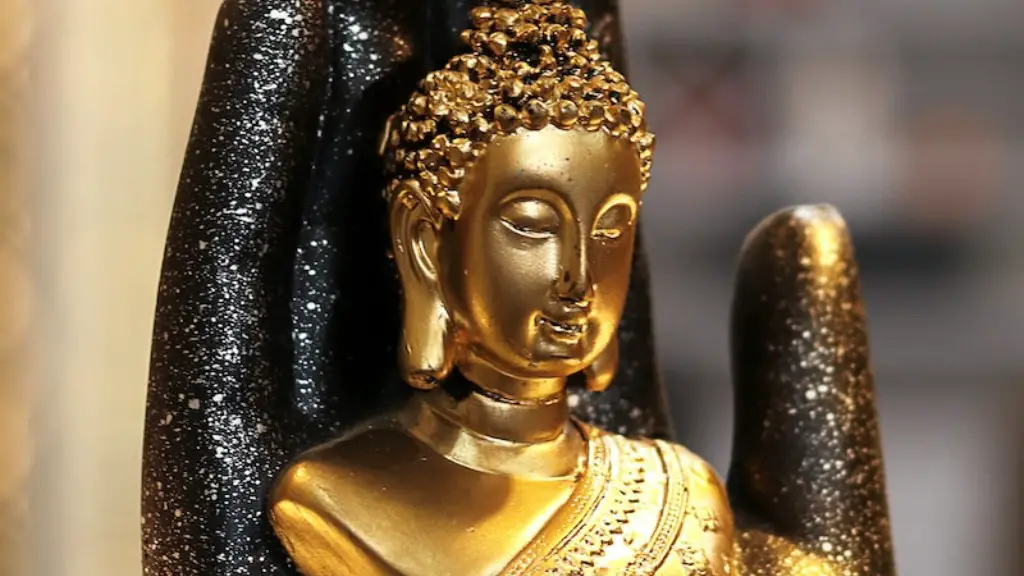A bodhisattva in Mahayana Buddhism is someone who is on the path to becoming a Buddha, but who has vowed to postpone their own final enlightenment in order to help others reach that same goal. The bodhisattva ideal is often contrasted with the more selfish goals of the Hinayana schools of Buddhism, which emphasize individual salvation over the welfare of others.
A bodhisattva is someone who is motivated by great compassion and who wants to attain Buddhahood for the sake of all beings. In Mahayana Buddhism, bodhisattvas are revered and worshiped as compassionate and enlightened beings who are able to help others.
What is the principal aim of bodhisattva?
Bodhisattvas are enlightened beings who have put off entering paradise in order to help others attain enlightenment. There are many different Bodhisattvas, but the most famous in China is Avalokitesvara, known in Chinese as Guanyin. Guanyin is often depicted holding a lotus flower and is said to be able to hear the cries of the world.
The sixteen bodhisattvas are associated with the Buddhas of the cardinal directions. They are believed to be able to help beings in the six realms of samsara.
What is the difference of bodhisattva definition between Theravada and Mahayana Buddhism
The basic difference between Theravada and Mahayana Buddhism is that Theravada Buddhism suggests that Bodhisattvas seek enlightenment first before they can help others stuck in Samsara. In Mahayana Buddhism, on the other hand, Bodhisattvas have greater prominence.
There are three types of bodhisattvas in Buddhist teachings: the shepherd-like bodhisattva, the oarsman-type of bodhisattva, and the king-like bodhisattva. Each type has its own unique qualities and characteristics. The shepherd-like bodhisattva is compassionate and caring, always looking out for the welfare of others. The oarsman-type of bodhisattva is strong and determined, always striving to help others cross the river of suffering. The king-like bodhisattva is wise and just, always working to create a world of peace and harmony.
What defines a bodhisattva?
A bodhisattva is someone who is seeking to become a buddha through their own efforts. In Buddhism, bodhisattvas are revered as being altruistic and compassionate beings who are dedicated to helping others. The term bodhisattva is derived from the Sanskrit words bodhi (awakening) and sattva (being).
The ten bhumis are important to early Mahayana Buddhism because they represent the ten “lands” a bodhisattva must pass through on the way to Buddha-hood. Bhumi is a Sanskrit word for “land” or “ground,” and the list of ten bhumis are the ten stages a bodhisattva must go through to achieve enlightenment.
How does one become a bodhisattva?
If you have taken the bodhisattva vow, you are working towards becoming a buddha. This involves venerating all Buddhas and cultivating supreme moral and spiritual perfection. You do this in order to be of service to others.
A bodhisattva is someone who aspires to become a Buddha, someone who is on the path to Buddhahood. In some ways, we are all bodhisattvas, because we all have the potential to achieve Buddhahood. However, most people are not consciously working towards this goal. They are more concerned with satisfying their desires or following their karma.
What is unique about Mahayana Buddhism
Unlike other Buddhists, Mahayana followers aspire to not only liberate themselves from suffering but also lead other people toward liberation and enlightenment. This is because they believe that everyone has the potential to achieve Buddhahood. As such, they focus on helping others so that they can also reach this highest state. In doing so, they hope to create a more compassionate world where everyone can live in peace and harmony.
Mahayana Buddhism is a form of Buddhism that developed in response to the growing popularity of Buddhism in the Chinese cultural sphere. Mahayana Buddhism emphasizes the role of the bodhisattva, or enlightened being, who postpones their own personal nirvana in order to help others achieve enlightenment. The bodhisattva ideal is at the heart of much of Mahayana Buddhist devotional and contemplative practice. In addition, Mahayana Buddhism developed new philosophical positions and interpretations of the Buddhist teachings. These new developments made it possible for laypeople to achieve enlightenment, whereas in early Buddhism only monastics could realistically hope to attain nirvana.
What are the two main kinds of Mahayana Buddhism?
Mahayana Buddhism is a large and diverse collection of Buddhist traditions. Some of the most well-known forms of Mahayana Buddhism are Zen Buddhism, Pure Land Buddhism, and Tibetan Buddhism. Each of these traditions has its own unique practices and beliefs, but they all share a common goal: to achieve enlightenment and help all beings to do the same.
A bodhisattva is someone who is on the path to becoming a Buddha. The historical Buddha was himself a bodhisattva before he became the Buddha, and Mahayana teachings say that all Buddhas are first born as bodhisattvas. Bodhisattvas progress through many lifetimes, growing closer and closer to Buddhahood with each one.
What is a female bodhisattva called
In Tibetan Buddhism, Tara is regarded as a Bodhisattva of compassion and action who is committed to helping all beings in Suffering. She is often imagined as a young princess with a thousand arms, each of which extends a helping hand to those who call upon her.
Tara is also known as the “Mother of all Buddhas” and is said to be able to help her devotees overcome any obstacle, no matter how difficult.
Those who follow Tara’s path are said to develop the same qualities of compassion and fearlessness that she embodies.
All dalai lamas are thought to be manifestations of the bodhisattva of compassion, Avalokitesvara. Bodhisattvas are beings who work solely for the benefit of others. For Buddhists, the ultimate goal is enlightenment, or “nirvana” – a liberation from the cycle of birth and death. The Dalai Lama is a spiritual leader who is thought to be a reincarnation of the previous Dalai Lama. The current Dalai Lama is the 14th Dalai Lama, Tenzin Gyatso.
Why is bodhisattva important to Buddhism?
Bodhisattvas are revered beings in Buddhism who have attained a high level of spiritual realization. In Mahayana Buddhism, the bodhisattva ideal is one that all Buddhists are encouraged to cultivate. The bodhisattva is someone who is dedicated to achieving awakening for the sake of all beings. This is in contrast to the non-Mahayana forms of Buddhism, where bodhisattvas are mainly considered to be the previous lives of Siddhartha Gautama, the Buddha. These previous lives are seen as worthy of veneration.
There is no single answer to this question as it is a deeply personal and spiritual experience. However, in general, awakening or enlightenment refers to a sudden realization or understanding of something that was previously hidden or obscured. This may be a realization about oneself, about the world around them, or about the nature of reality itself. The term satta/sattva means “sentient being” or “attached to”, and bodhisattva means being attached to awakening. In the Theravada tradition, there are said to be ten perfections that one must cultivate in order to achieve enlightenment, which are generosity, virtue, renunciation, wisdom, energy, patience, truthfulness, determination, loving kindness, and equanimity.
How does a Buddha become a bodhisattva
A Bodhisattva is a being who is on the path to enlightenment. They may have not attained complete enlightenment yet, but they are working towards it. Once they do achieve complete enlightenment, they become Buddha.
The key principle of Mahayana Buddhism is “Skilful Means”. This principle is based on the idea that the Buddha is infinitely compassionate and thus has the ability to teach in a way that is best suited for each individual. This principle is first described in the Lotus Sutra, and is rooted in the myths of the Buddha’s compassionate plans for liberating beings from the cycle of birth and death.
Conclusion
In Mahayana Buddhism, a bodhisattva is someone who is dedicated to achieving nirvana, but refuses to do so until all other beings have also attained it. A bodhisattva is thus someone who is on the path to becoming a buddha.
A bodhisattva, in Mahayana Buddhism, is an enlightened being who has earned the right to enter nirvana but chooses to stay in the earthly realm to help others achieve liberation from suffering. They are also known as “buddha-to-be” and are revered for their compassion and altruism.



